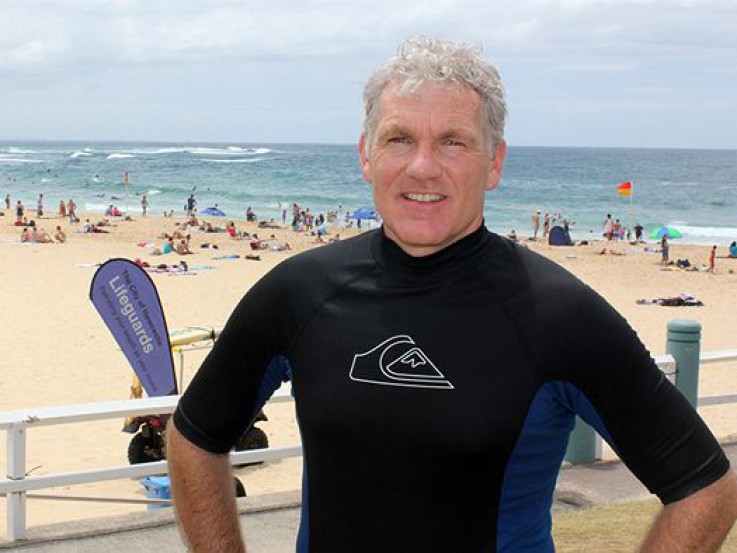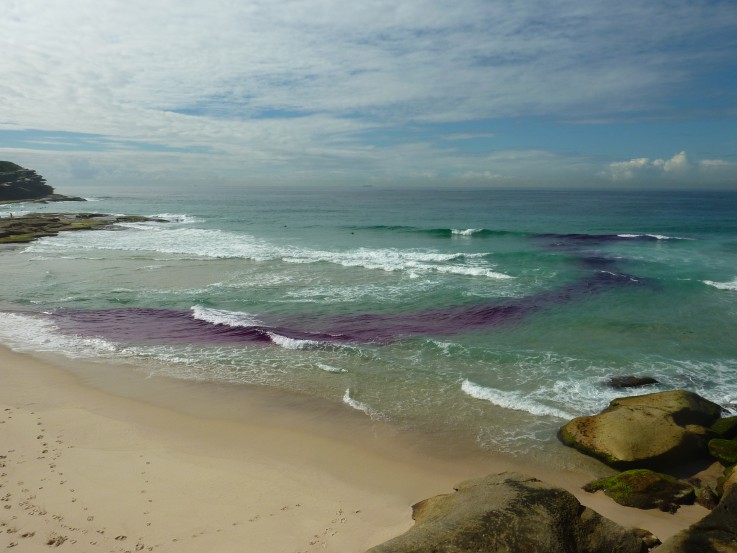Rob Brander - Dr Rip
When and where was your passion for the ocean born?
I grew up in Toronto in Canada and there’s no ocean there, but every year I would go on a family holiday to Cape Cod in The United States. There were no waves there really, but I just loved going in the ocean and felt a special connection with it. I ended up studying coastal geomorphology at the University of Toronto which is essentially about beaches and I was involved as a student and diver in field experiments on beaches around Canada where we installed equipment to measure how sandbars behave. When I finished my Masters I went backpacking and headed straight to Australia because I wanted to experience some beaches with decent water temperatures! I remember walking from Coogee to Bondi where I caught my first bodysurfing wave and just thinking it was the best thing ever, so I was hooked from that moment on. I travelled up the East Coast for a couple of months and came back the next year to do my PhD on rip currents at Sydney Uni. It’s a long story, but I ended up becoming caretaker of the Tamarama Beach Surf Club and lived there for 3.5 years and found myself in the water bodysurfing or bodyboarding all the time.
Do you have any sessions that stand out as your most memorable?
I’ve had many awesome sessions at the Tamarama reef. I remember one bodysurfing session at Bondi in May, when there’s not many people in the water, and it just went on and on and on and I was actually whooping on the waves because it was so good. But my best session ever was probably in Hawaii at a place called Slaughterhouse Beach on Maui. It didn’t look too big, a bit like Bondi, but I got on this wave and could just feel this great power. I’ve had some amazing bodyboarding sessions in New Zealand as well when I lived over there for a few years. NZ has great surf.
What sparked your interest in studying the ocean?
I had a love of the ocean, and knew I wanted to work outdoors. I took Physical Geography at University and the guy who taught me was a coastal scientist. So I thought studying the beach sounded like a pretty good career!
What sort of things do you study?
I study the relationships between the processes of tides, currents and waves and how that affects sand movements and the beach over time. So there are a lot of approaches depending on the type of coastal environment. It can involve quite a lot of physics and maths, depending on the approach. My focus has always been researching rip currents although I did study wave processes around coral reef-islands for a while.
So what kind of jobs does studying the ocean in that way offer?
If you want to research beaches, you have to do it from an academic perspective. Outside of academica, the most common ‘beach’ jobs are found with environmental consultancies. Any time you build near the coast you have to do an environmental impact assessment and every council has to do coastal hazard studies and management plans etc.
What has your own career path been like?
I came out of the University of Toronto with my Masters in Geography and then I took a year off to travel and then came to Sydney Uni where I did my PhD on rips in Geography. After that I got my first job at Victoria University in Wellington, New Zealand for 2 years, but the whole time I was pining to come back to Australia and was lucky to get a job at the University of NSW and that’s been it really. There was a gap where I took 2 years off in 2006- 2007 where I wanted a break from Uni to start off my Science of the Surf beach safety program and really focus on getting it into schools.
Is that when you were christened Dr. Rip?
I think so! I started Science of the Surf back in 2001 just doing talks at Tamarama during the summers, and in the Surf Club there they used to call me ‘Dr Rob’. I think it was either Dr Karl or the Waverley Council Lifeguards who started calling me ‘Dr Rip’ after I started putting purple dye in rips. I remember Ben Davies of Bondi Rescue in the first year it was on calling me and saying “I hear you’re Dr Rip” which was when I first noticed the nickname was spreading.
What kind of work have you been doing with rips?
Initially I was a hardcore scientist studying the physics of how they flow and their movement. Then as I got more into the community side of things my interest started to shift towards that. It really bothers me that so many people drown in rips, because it’s such an avoidable hazard. I started to research ways in which we could get a handle on what people do and don’t know about beaches. I turned my scientific interest in rips into more of a social science. A lot of the stuff we’ve been doing over the last few years is measuring people’s escape strategies from rips and whether you should swim parallel or stay afloat. We’ve been surveying people who’ve been caught in these currents before and studied specific movement that has kind of gone global. At the moment I’ve taken interest in surfers doing rescues, I’ve seen so many surfers rescue swimmers caught in rips on unpatrolled beaches that nobody has really documented, so we’ve got a study in progress at the moment on the role of surfers in rescuing people.
What do you love about your job?
Everything. Academia can be incredibly full on and stressful, but you’ve got this amazing freedom to do what really interests you and what you care about. I love following my passions.
What does your day-to-day work involve?
It’s pretty varied. From teaching sessions to research sessions which are always going on in the background, writing grants, writing papers, supervising honours and PhD students, plus a lot of field work. I’ve spent a lot of time in the Maldives, which is pretty cool!
Can you see yourself continuing in this field in the future?
Now that it’s gone into this social science beach safety aspect I think it’s really rewarding and also important that I’m doing it. It’s nice to do academic work with real world outcomes that people can relate to.
Tell us about this new study of yours?
Rip currents are what I do and I’ve always been frustrated about the amount of deaths that occur because of them. While we do take them seriously, they never seem to garner the attention they deserve. I think there is a fair bit of complacency where people just don’t really acknowledge them. So we did this study with Surf Life Saving where we looked at statistics over the last 10 years of people who have drowned in rips and it came up with an average of 21 people a year in Australia. That’s based on confirmed rip drowning’s, so somebody saw somebody get caught in a rip and drown which is what is written in the coroners report. But the actual number is much higher. It’s probably closer to 30 or 40. So with a couple of students help we looked at long term data sets of other natural hazards in Australia from cyclones to sharks and how many people are killed by those, and that number of 21 was higher than all of the others put together.
Do you have any advice for those wanting to follow a similar career path?
The most important thing is to do something you like doing, if you have a passion for something and that’s what you want to do, then you have the power to make it happen. You’ve just got to be passionate, which sometimes means you have to disregard the money side of things. I never wake up not wanting to go to work, I look forward to it because I know something exciting is going to happen. So I think you’ve just go to follow your interests and don’t be afraid to take chances.
Where can we find you online?
| Web: | www.scienceofthesurf.com |
| Facebook: | www.facebook.com/pages/Dr-Rips-Science-of-the-Surf |
| twitter.com/Dr_Rip_SOS |
Posted by: Troy Roennfeldt, on December 3, 2013
Categories: Interviews
Latest Posts
Craig Sims - White Horses & Surfing Life Publisher
Luke Kennedy - Editor of Tracks Magazine
Simon ‘Swilly’ Williams - Surf Photographer
Jarra Campbell - the Bondi Alchemist
Greg Gordon - Owner of CR Surf
Shayne Nienaber - Surf Photographer
Alexa Hohenberg - Owner of Still Stoked
Christine Deveney - TapaReef Owner & Creator
Russell Ord - Surf Photographer
Richard Kotch - Surf Photographer
Categories
Interviews
Articles
Videos
Press Releases
Quiz
Archive
December 2018
November 2018
October 2018
September 2018
August 2018
July 2018
June 2018
May 2018
April 2018
March 2018
February 2018
January 2018
November 2017
January 2017
December 2016
November 2016
October 2016
September 2016
August 2016
July 2016
June 2016
May 2016
April 2016
March 2016
February 2016
January 2016
December 2015
November 2015
October 2015
September 2015
August 2015
July 2015
June 2015
May 2015
April 2015
March 2015
February 2015
January 2015
December 2014
November 2014
October 2014
September 2014
August 2014
July 2014
June 2014
May 2014
April 2014
March 2014
February 2014
January 2014
December 2013
November 2013
October 2013
September 2013
August 2013
July 2013
June 2013
May 2013
April 2013
March 2013










